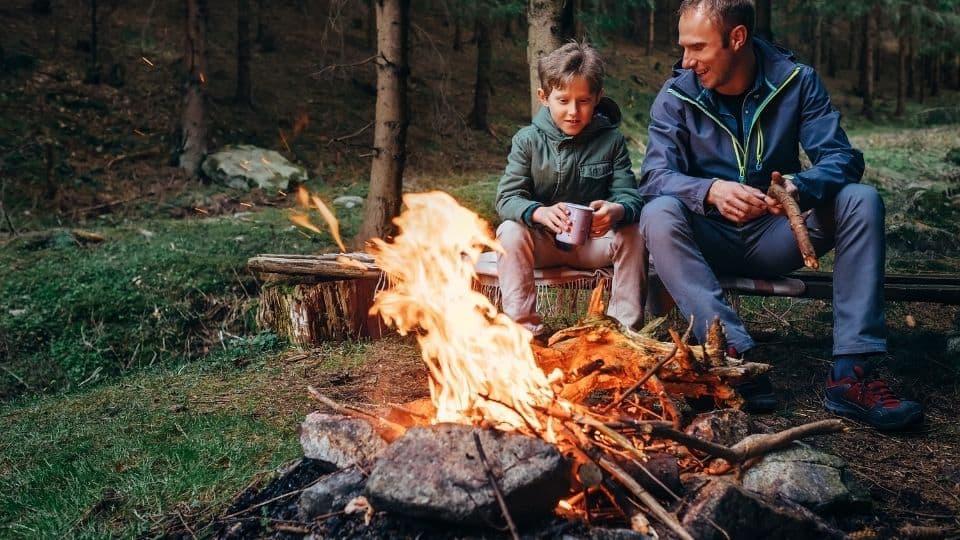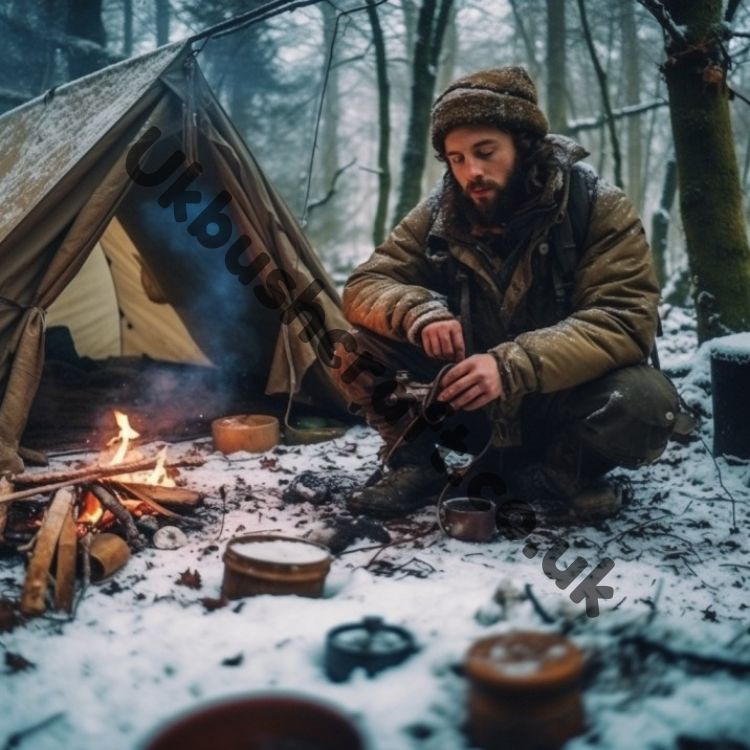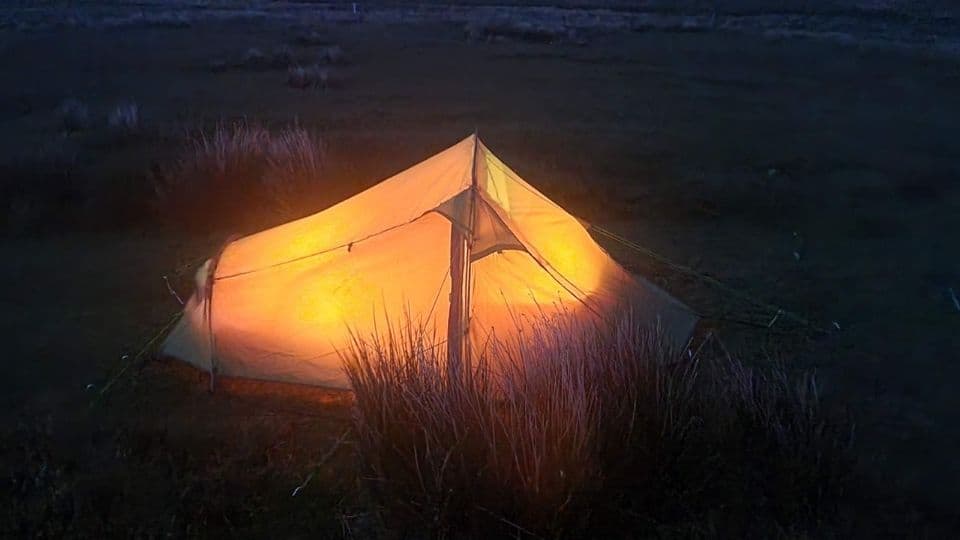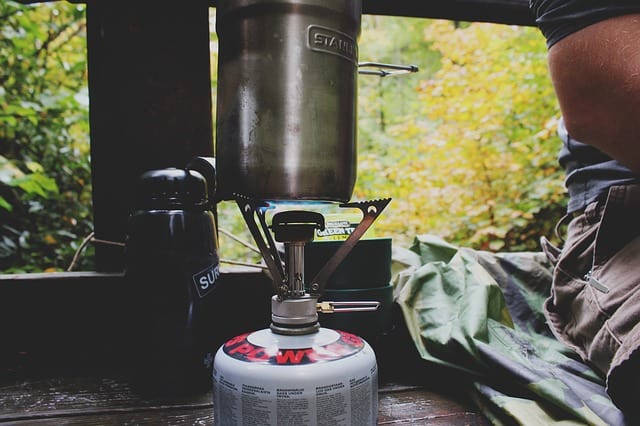
Ok, time to start with the Bushcraft campfire basics, first of all, what is needed to start a fire?.
Well, there are three main ingredients to making a fire.
Ignition is number ONE. Without ignition, there can be no fire. Again this can take on many forms. There are lighters, matches, ferrocerium rods, flint and steel, bow drill, solar To name a few.
Oxygen is number TWO, without oxygen, a fire will never be able to start and will also die out if it is starved of oxygen, and this can be quite a common problem for people new to starting a campfire. Rushing to start a fire, you can often starve the fire of oxygen, by adding too much fuel to fast. As a result, your flame will die, a raft can be used to help get oxygen under your fire when starting.
Fuel is number THREE, now that may be in liquid or solid form or some cases you may use gas if using a burner.
A quick read through the rest of this guide should see you get your bushcraft campfire lit in no time.
Table of Contents
Ignition, Bushcraft Vs Conventional Methods
Starting a Bushcraft campfire can be done in many ways, it does not have to be complicated. Here are some of the most common ignition sources used in Bushcraft and campfire building.
They all work well, tho some Bushcraft purists don’t like to use a lighter or match. I will list them as bullet points here.
- Standard lighter
- Turbo flame lighter
-
TURBOFLAME Vflame Olive Green – Stormproof &…
- Wind and precise flame
- Ideal for jobs requiring short bursting of intense and powerful…
- Can light upside down and reach difficult areas without burning…
- Flip safety cap keeps burners clean and allows easy one-handed…
Last update on 2025-10-25 at 20:12 / Affiliate links / Images from Amazon Product Advertising API
- Matches
- Windproof matches
- Ferrocerium rod —- our top 5 here
- Flint and Steel
- magnifying glass
- Fire piston
- bow drill
Tinder
Here I will list some of the common fire tinder found and used in bushcraft campfire building.
Cramp ball fungus takes a spark super easy and can hold an ember for a very long time. Can be found on ash trees.
Birchbark takes a spark well and is very easy to store for when needed.
Fatwood found inside of pine trees can be a good firestarter, a lot of people have a small stick on their keys.
Char cloth quite easy to make, but it is usually something you would bring into the woods with you.
Cotton wool that gets coated in quite a lot of things like vaseline and again is something you may bring into the woods with you.
Click here for our guide on natural tinder
Gathering Kindling
If conditions are wet chances are you will not find anything on the ground. So look up into the trees often there are deadfall branches suspended in the trees.
They will be dry to what you may find on the ground. Hazel trees are useful for finding dead standing wood. Be careful of what may be above them you don’t want anything landing on you when pulling out dead branches from above your head.
Look for a mix of sizes, as you will need a range of sizes to start your campfire from around 0.5 cm (size of a pencil) in diameter up to around 2-3 cm (size of your thumb) diameter should see you get a campfire going.
Most of this size wood you should not need any tools to collect. A small folding saw may be of use in some situations. You will need larger branches when the fire gets going, so keep this in mind, and with that onto the next part.
Gathering Fuel Wood
This task will be easier if you have the correct tools for the job. A small folding saw is ideal in this situation, as is an axe or a bow saw for the bigger logs where possible try to gather wood from trees that are already dead.
Usually, there is no need to damage a healthy tree. The wood from a fallen tree will probably be a bit drier and burn better. Here we are looking for logs so anything from 4 to 8 inches in diameter.
Another tip is, if you can manage it, drag or carry a whole branch back to camp, Process the wood there.
That way you are not trying to juggle five or six logs at a time and dropping them all over its not fun. Especially in the rain!
Where to Light a Bushcraft Campfire
Care should be taken when choosing where to light your campfire. Let’s say you were in a coniferous woodland the floor may be littered with dry pine needles, So that’s right; the ground is one big giant pile of tinder.
Starting a campfire on top of that is not a good idea as the fire can spread very quickly. Before you know it, you could have a forest fire on your hands.
So good practice is to always clear a spot for your campfire and always make it a little bigger than you need to be safe.
Try your best to get down to bare earth, digging a fire pit could be an option for your campfire but again would depend on the situation.
Tips Before You Light A Campfire
- Never use gasoline to start a fire
- keep your campfire as small as you can
- Be sure you have access to a water source for when it comes to putting out your campfire
- if it’s your first time starting a campfire get twice as much tinder, kindling, fuel wood as you think you are going to need
- Get your prep right before your break out the fero rod.
- Have all your wood and tinder laid in separate piles ready to build and fuel your campfire.
- Move anything that does not have to be near the fire well out of the way before you light the fire.
- If you have pets with you be sure to put them on a lead, especially if its there first time around a campfire.
- If there are kids around make sure they are safe around the fire.
How to Put Out a Campfire
Ok, so its home time and you need to put out the campfire.
- allow the fire to burn down to embers/ashes.
- douse with lots of water.
- stir the embers with a stick, all the time adding more water.
- if you have added enough water, you should be able to touch the embers with bare hands by now. If not keep the water coming.
- if you can now touch it with bare hands scoop up hands full of the ashes and spread them thinly over a large area away from the fire site (please only do this if they are dripping wet, so there is zero chance of an ember).
- once the site is clear of ashes add more water to the whole fire site to be sure nothing is burning underground and get busy with that stick again.
- take a look around the entire camp for any stray embers.
- any large logs that may be left over should also be doused in lots of water.
- once you are sure you have it all try your best to leave the area how you found it. cover it with leaf litter ETC —Leave no trace.
- And remember if you can not touch it, it’s too hot to leave it there and needs more work/water.




